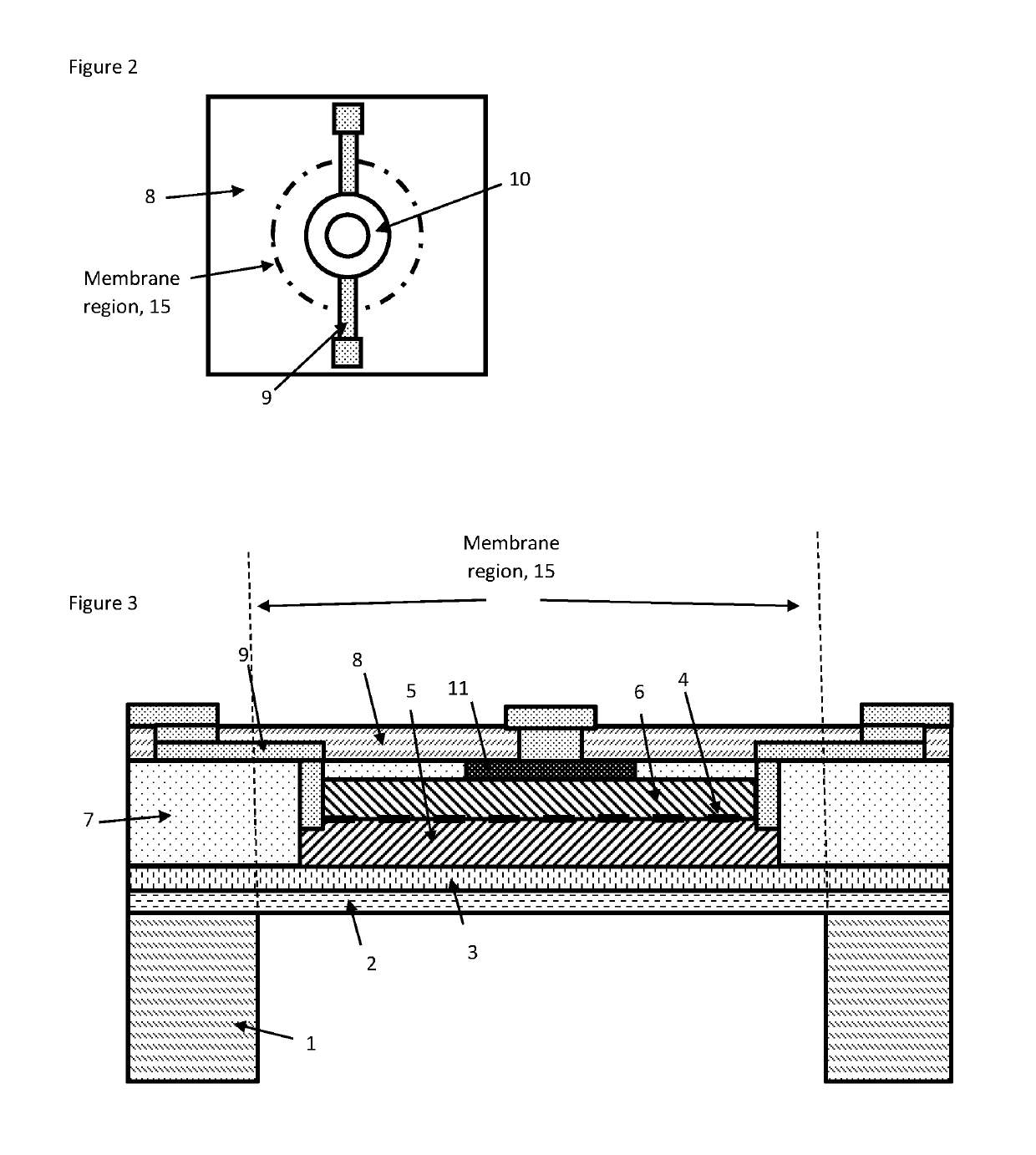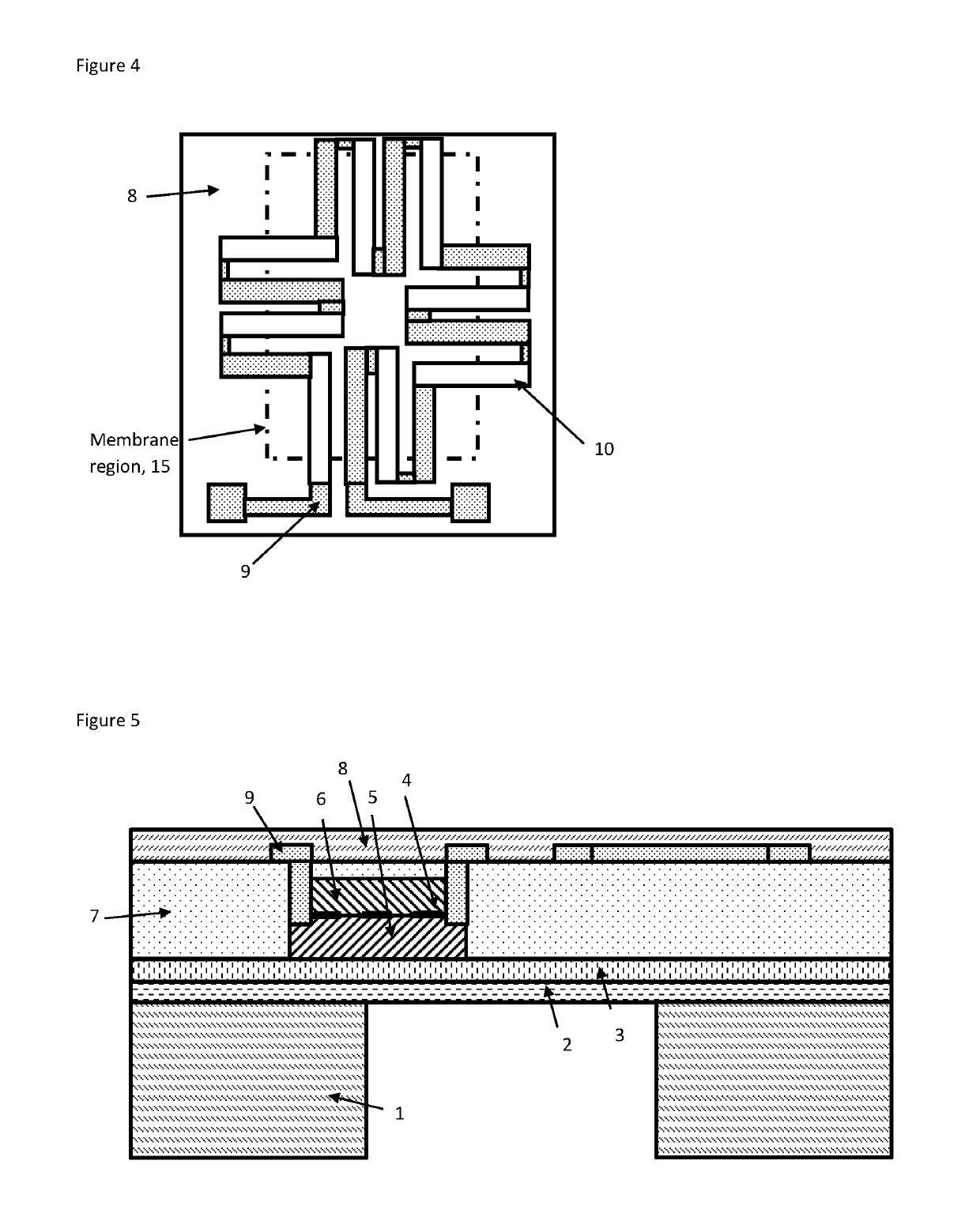Infra-red devices
a technology of infra-red devices and micro-machined thermal infrared, which is applied in the manufacture/treatment of thermoelectric devices, radiofrequency controlled devices, instruments, etc., can solve the problems of insufficient emissivity, small control of emission at specific wavelengths, and inability to electro-migrate metal layers, etc., to improve the overall ir device array lifetime, reduce thermal dissipation, and improve the overall ir device array performance
- Summary
- Abstract
- Description
- Claims
- Application Information
AI Technical Summary
Benefits of technology
Problems solved by technology
Method used
Image
Examples
Embodiment Construction
[0047]Some preferred embodiments of the disclosure will now be described by way of example only and with reference to the accompanying drawings, in which:
[0048]FIG. 1 shows a cross section of a heterostructure-based infra-red device that can be operated as IR emitter and / or as IR detector;
[0049]FIG. 2 shows a top view of a heterostructure-based infra-red device that can be operated as IR emitter and / or as IR detector;
[0050]FIG. 3 shows a cross section of a heterostructure-based infra-red device that can be operated as IR emitter and / or as IR detector. The heating element and / or the temperature sensing element is in form of an HEMT;
[0051]FIG. 4 shows a top view of a heterostructure-based infra-red device that can be operated as IR detector. The temperature sensing element of the IR detector is in form of a thermopile;
[0052]FIG. 5 shows a cross section of a heterostructure-based infra-red device that can be operated as IR detector. The temperature sensing element of the IR detector is...
PUM
 Login to View More
Login to View More Abstract
Description
Claims
Application Information
 Login to View More
Login to View More - R&D
- Intellectual Property
- Life Sciences
- Materials
- Tech Scout
- Unparalleled Data Quality
- Higher Quality Content
- 60% Fewer Hallucinations
Browse by: Latest US Patents, China's latest patents, Technical Efficacy Thesaurus, Application Domain, Technology Topic, Popular Technical Reports.
© 2025 PatSnap. All rights reserved.Legal|Privacy policy|Modern Slavery Act Transparency Statement|Sitemap|About US| Contact US: help@patsnap.com



